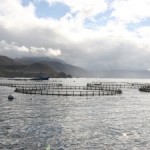
Managua (Nicaragua) – At a meeting on new technologies to ensure legal, sustainable and traceable international wildlife trade, senior Customs officers and authorities responsible for implementing the Convention on International Trade in Endangered Species of Wild Fauna and Flora (CITES) discussed the transition from paper to electronic permitting systems. The new systems will allow the harmonization of CITES and Customs controls and data standards for a more efficient tracing of an ever-growing trade in wildlife products.
With the support of the US Department of the Interior’s Technical Assistance Programme (ITAP), and in collaboration with the Central American Commission on Environment and Development (CCAD) and the CITES Secretariat, over 30 participants from Brazil, Costa Rica, El Salvador, Guatemala, Honduras, Nicaragua and the Dominican Republic gathered in Managua from 27 to 29 June to discuss the implementation of national and regional e-permitting systems, use of Single Windows to organize better and offer access to trade-related information, promote collaboration with existing initiatives, and reinforce the capacity of Customs to control and trace international wildlife trade.
This meeting also resulted from a unique and innovative partnership by CITES Parties and international organizations to strengthen capacities, introduce new technologies and share and exchange experience and expertise on new information and communication technologies. It highlighted the critical role of Customs in ensuring that trade in CITES species remains legal and traceable. Perhaps most important of all, the meeting laid out a road map to develop joint funding proposals to assist in the development of national and regional CITES e-permitting systems.
Brazilian experts offered to share their know-how and to transfer e-permitting technologies within the framework of existing cooperation agreements. In addition, countries with experience in the establishment of single entry points for trade-related information, usually called Single Windows, also agreed to share and make available their expertise. Parties were also invited to participate in other new initiatives that aim to facilitate validation of CITES permit data by CITES Authorities and Customs officials, such as the Electronic Permit Information eXchange (EPIX), developed by the UNEP World Conservation Monitoring Centre.
The CITES Secretary-General, John E. Scanlon, described the results of the meeting as “offering a taste of the future for CITES implementation, where CITES trade processes are fully electronic, thereby enabling better control of trade and delivering greater conservation benefits.”
Jason Riley, from the US Department of the Interior (USDoI), said, “The United States is committed to working with our trading partners in Central America and the Dominican Republic to strengthen implementation of CITES. I am impressed by the energy and efforts of my colleagues in the region to explore new technologies for controlling trade in CITES-listed species.”
Margarita Salazar from CCAD, welcomed the participation of the CITES Secretariat and thanked the financial support provided by ITAP. She declared, “CCAD expects that the results of this workshop will contribute significantly to simplify administrative procedures to facilitate the exchange of trade information on real time.”
Finally, participants were introduced to new developments in electronic commerce led by international organizations such as the World Customs Organization (WCO) and the United Nations Centre for Trade Facilitation and Electronic Business (UN/CEFACT). These organizations are key partners in developing harmonized e-permitting systems that are compliant with international standards and norms.
Source: UNEP.













